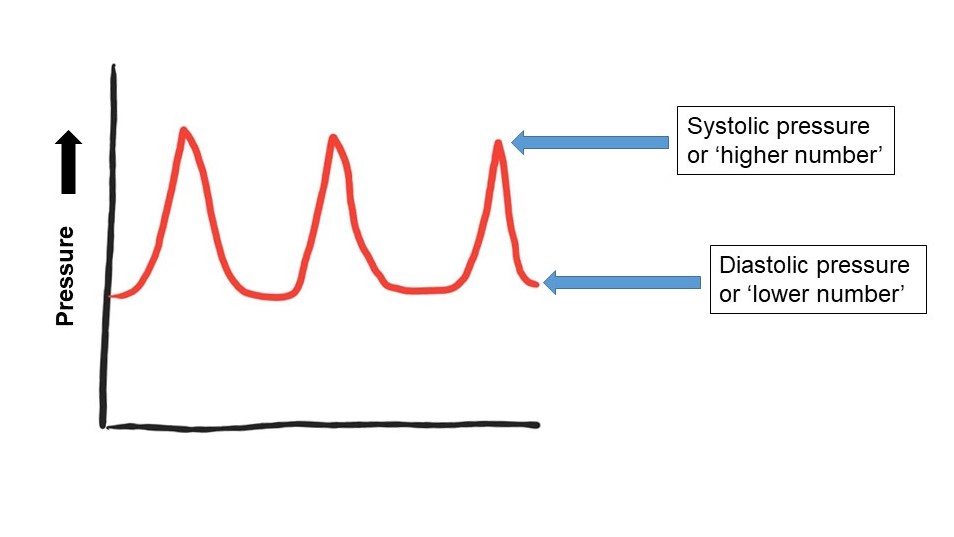
What is blood pressure?
Blood pressure is one of the most basic things always checked at the doctor’s office. It is essentially the pressure that the blood exerts on the artery wall. Arteries and veins are always filled with blood, like a tube filled with water, and there is a constant pressure within the arteries. This is the diastolic pressure or the ‘lower number on the pressure reading’. When the heart beats, blood is pushed into the arteries, like a wave in the sea. This raises the pressure inside the arteries with each heart-beat. This is called the systolic pressure or the ‘higher number on the pressure reading’. (figure 1)

Imagine a garden hose pipe with water flowing constantly. The water pressure inside the pipe corresponds to the diastolic pressure. Now if you open the tap wide, the flow increases and so does the pressure. This is the systolic pressure. The heart beat ‘opens up the tap wider’ with each heart squeeze in this analogy.
More blood is pushed through into the arteries with each heart beat and the blood keeps moving forward, making its way back to the heart. (figure 2)

How is the blood pressure measured?
In the classic manual method, a cuff is applied to the arm. A stethoscope is placed on an artery in the elbow, beyond the cuff. As the cuff in inflated, the blood flow through the artery starts decreasing, until it stops completely beyond a certain pressure.
The cuff is then slowly deflated while listening to the stethoscope. When the pressure of the cuff drops below the systolic pressure, a knocking sound is heard correlating with each heart-beat. This knocking sound is caused by the blood escaping beyond the cuff during the heart squeeze when the pressure increases. This is the systolic pressure or the ‘higher number on the reading’. (figure 3)

As the cuff is deflated further, the knocking gets softer until it disappears. At this point, the cuff pressure is below the ‘lower number’ and the blood is flowing through the artery without feeling any obstruction at any point in time. This is the diastolic pressure. (figure 4)

Why do we have blood pressure?
Blood pressure is required to push the blood to various organs. Like a garden hose, without continuous water pressure applied by the tap, water will not flow and come out of the other end. Too low water pressure and the water flow dries out. Too high pressure and the water jets out too fast and may even rupture the pipe at the weak segments.
How does salt affect the blood pressure?
Follow on Twitter: gaurang_md
All opinions expressed here are those of the author and not of the employer. Information provided here is for medical education only. It is not intended as and does not substitute for medical advice.
Simple and succinct for the target population! Great job Dr. Vaidya!